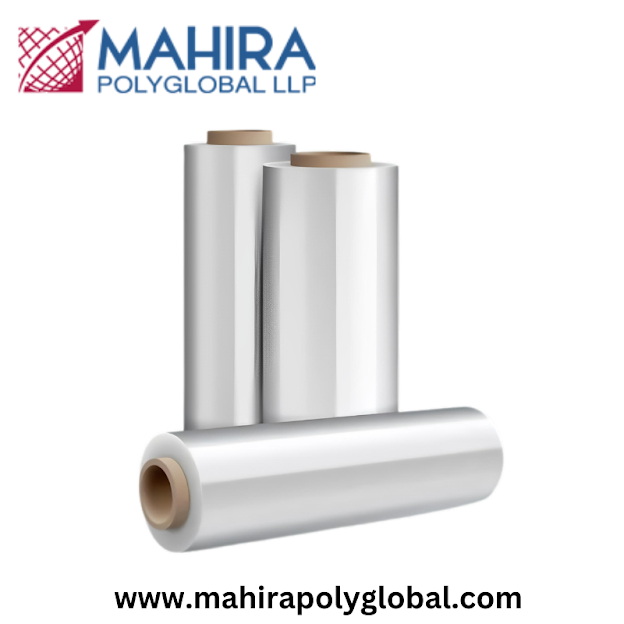How HDPE Sheets Contribute to Waste Reduction in Packaging
As the world grapples with the growing challenge of waste management, industries are increasingly seeking sustainable solutions. One material that stands out in this context is High-Density Polyethylene (HDPE) sheets. Widely used in packaging, HDPE sheets offer significant advantages in reducing waste, making them a crucial element in the quest for sustainable packaging solutions. This article explores how HDPE sheets contribute to waste reduction in packaging, their properties, applications, and their role in promoting environmental sustainability. Additionally, we’ll provide insights into sourcing high-density plastic sheets, including information about pricing and suppliers like Mahira Polyglobal LLP.
Understanding HDPE Sheets
HDPE sheets are made from high-density polyethylene, a versatile thermoplastic characterized by its high strength-to-density ratio. These sheets are available in various thicknesses and sizes, making them suitable for a wide range of applications, particularly in the packaging industry. Their inherent properties, such as durability, moisture resistance, and recyclability, make them an excellent choice for reducing waste.
The Environmental Impact of Packaging Waste
Packaging waste is a significant environmental concern. Traditional packaging materials, such as polystyrene, PVC, and non-recyclable plastics, contribute to pollution and landfill overcrowding. The production and disposal of these materials result in substantial carbon emissions and environmental degradation. In contrast, HDPE sheets present a more sustainable alternative, helping to mitigate the negative effects of packaging waste.
How HDPE Sheets Reduce Waste
Recyclability: One of the most significant advantages of HDPE sheets is their recyclability. Unlike many traditional packaging materials, High Density Polyethylene Sheet can be recycled multiple times without losing its quality. This characteristic not only reduces the volume of waste sent to landfills but also conserves resources by allowing materials to be reused in the production of new products.
Durability and Longevity: High-density polyethylene sheets are known for their strength and resistance to impacts and moisture. Their durability ensures that products packaged in HDPE sheets are well-protected during transport and storage, minimizing the risk of damage and spoilage. This leads to fewer replacements and less waste generated from discarded packaging.
Lightweight Design: HDPE sheets are lightweight, which translates to lower transportation costs and reduced carbon emissions. When less energy is used in transportation, the overall environmental impact of packaging is diminished. Additionally, lighter packaging requires less material to produce, further contributing to waste reduction.
Reduced Packaging Volume: HDPE sheets can be manufactured in various thicknesses, allowing for tailored solutions that meet specific packaging requirements. By optimizing the thickness of the material used, manufacturers can minimize excess packaging and waste. This adaptability helps in creating efficient packaging designs that conserve materials.
Compliance with Regulations: Many regions are introducing stricter regulations on packaging waste. HDPE sheets, being recyclable and environmentally friendly, help businesses comply with these regulations, reducing the likelihood of fines and promoting a sustainable image.
Applications of HDPE Sheets in Packaging
HDPE sheets are utilized in a variety of packaging applications due to their beneficial properties:
Food Packaging: HDPE sheets are commonly used for food containers and trays. Their safety for food contact and moisture resistance help prolong the shelf life of perishable goods while minimizing waste.
Industrial Packaging: In the industrial sector, HDPE sheets are used for pallets, bins, and crates. Their durability ensures that products are protected during shipping and storage, reducing losses and waste.
Retail Packaging: Retailers increasingly use HDPE sheets for product displays, bags, and other packaging solutions. Their recyclability aligns with consumer demand for sustainable products, further driving waste reduction.
Sourcing HDPE Sheets
When considering the use of HDPE sheets for packaging, it is important to find a reputable supplier. Mahira Polyglobal LLP is one such supplier, known for providing high-quality high-density plastic sheets. They offer a range of products that meet industry standards, ensuring businesses can rely on the quality and sustainability of their packaging materials.
Factors Affecting HDPE Sheets Price
The HDPE Sheets Price can vary based on several factors:
Thickness and Size: The thickness and dimensions of the sheets play a significant role in pricing. Thicker sheets typically cost more due to the additional material used.
Market Demand: Fluctuations in demand for HDPE sheets can affect pricing. Higher demand often leads to increased costs, while lower demand may result in competitive pricing.
Supplier Reputation: Established suppliers with a track record of quality and reliability, like Mahira Polyglobal LLP, may charge higher prices due to the assurance of product quality and customer service.
Customization Options: If specific customizations are needed (such as color, texture, or printing), the price may increase to accommodate these requirements.
Conclusion
High Density Plastic Sheets are a vital component in the ongoing effort to reduce packaging waste and promote environmental sustainability. Their recyclability, durability, and lightweight design make them an excellent choice for various packaging applications, contributing to waste reduction in significant ways. By sourcing high-quality high-density polyethylene sheets from reputable suppliers like Mahira Polyglobal LLP, businesses can not only enhance their packaging solutions but also play a role in fostering a more sustainable future. As industries continue to prioritize eco-friendly practices, the importance of materials like HDPE sheets will only grow, leading to a positive impact on waste management and environmental health.
FAQs About HDPE Sheets
1. What are HDPE sheets made of?
HDPE sheets are made from high-density polyethylene, a type of thermoplastic polymer known for its strength and versatility.
2. How do HDPE sheets contribute to waste reduction?
HDPE sheets reduce waste through their recyclability, durability, lightweight design, and ability to minimize packaging volume.
3. Are HDPE sheets safe for food packaging?
Yes, HDPE sheets are FDA-approved for food contact, making them a safe choice for food packaging applications.
4. Where can I buy high-density plastic sheets?
High-density plastic sheets can be purchased from reputable suppliers like Mahira Polyglobal LLP, which offers a variety of HDPE sheet products.
5. What factors affect HDPE sheets price?
HDPE sheets price can be influenced by thickness, size, market demand, supplier reputation, and customization options.
.jpg)

.jpg)

Comments
Post a Comment